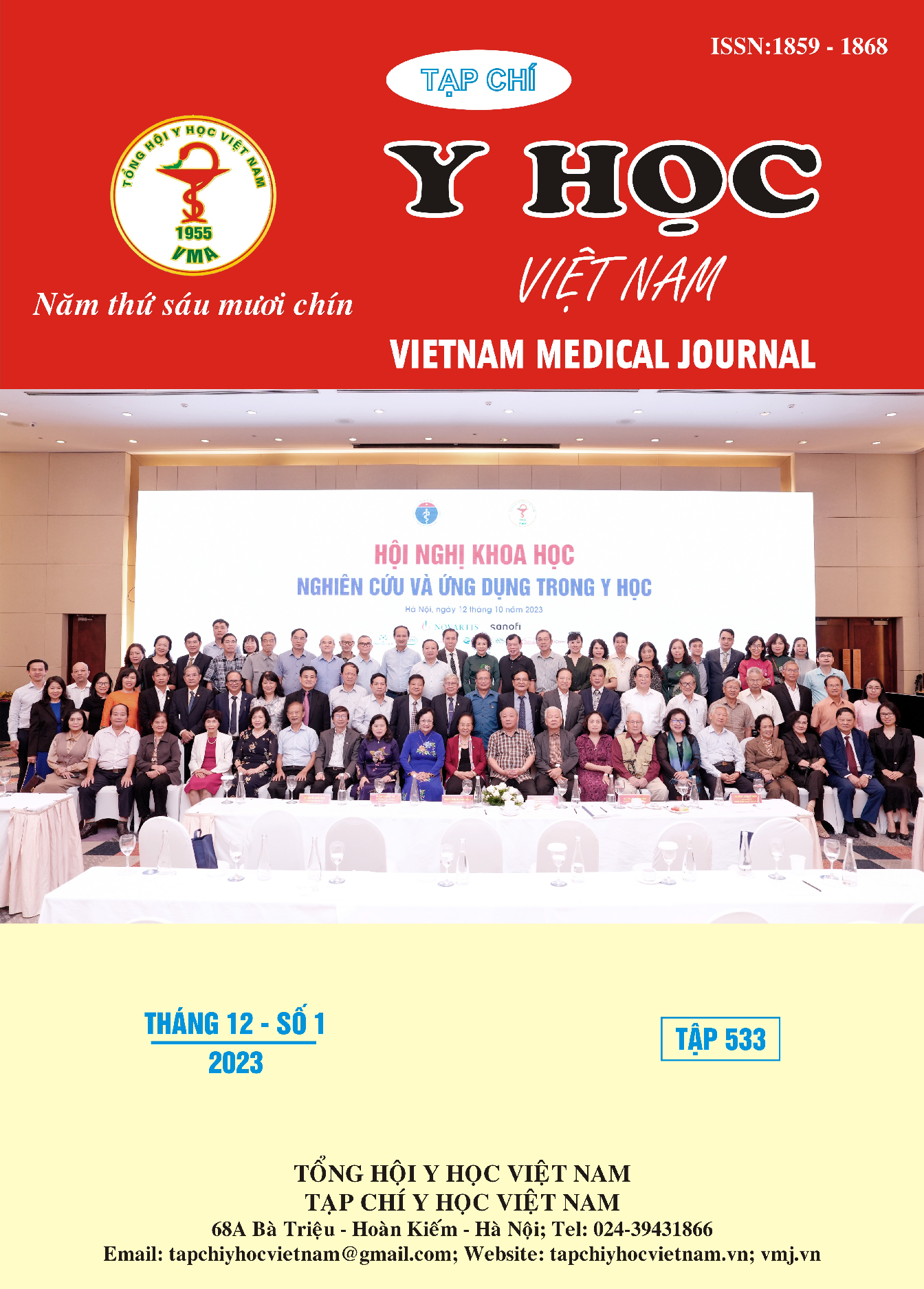KẾT QUẢ PHẪU THUẬT CẮM NIỆU QUẢN BÀNG QUANG Ở BỆNH NHÂN GHÉP THẬN TỪ NGƯỜI CHO CHẾT NÃO
Nội dung chính của bài viết
Tóm tắt
Mục tiêu: Đánh giá kết quả về ngoại khoa kỹ thuật cắm niệu quản vào bàng quang ở những bệnh nhân ghép thận từ người cho chết não tại bệnh viên Việt Đức. Đối tượng và phương pháp nghiên cứu: Mô tả lâm sàng, nghiên cứu cắt ngang trên 82 bệnh nhân thận ghép lấy từ người chết não Các chỉ tiêu nghiên cứu: thời gian lọc máu trước ghép, thời gian lọc màng bụng, dung tích bàng quang trước ghép nhỏ < 100ml, lớn > 100ml, đặc điểm thành bàng quang người nhận, đặc điểm phẫu thuật ghép thận (thời gian thiếu máu nóng, lạnh, thời gian cắm niệu quản vào bàng quang, thời gian phẫu thuật), biến chứng tiết niệu sớm: đái máu, hẹp niệu quản, rò niệu quản. Kết quả: BN lọc máu lâu nhất 18 năm (1BN). 12,2% các BN được ghép thận trước khi phải lọc máu Thời gian lọc máu trước ghép thận: 21,71±36,55 (0 – 216) tháng. Dung tích bàng quang nhỏ gặp khoảng ¼ các trường hợp, thường gặp ở những bệnh nhân vô niệu nhiều năm. Dung tích bàng quang trung bình là: 217,3 ± 101,4 ml nhỏ nhất 40ml, lớn nhất 350ml. Thời gian cắm NQ-BQ trong 82 TH của chúng tôi trung bình là 27,5 ± 12,0 phút, nhanh nhất 13 phút và lâu nhất 70 phút. 2 trong 3 trường hợp hẹp niệu quản cần tạo hình lại miệng nối; trường hợp còn lại được nong niệu quản. 1 TH Lymphocele và 1 TH nhiễm khuẩn vết mổ được điều trị nội khoa. Kết luận: Kỹ thuật cắm niệu quản vào bàng quang đối với thận lấy từ người cho chết não cũng thuận lợi như với người cho sống, biến chứng thấp, dung tích bàng không ảnh hưởng đén chức năng thận ghép.
Chi tiết bài viết
Tài liệu tham khảo
2. Lê Anh Tuấn (2011). Biến chứng của kỹ thuật trồng lại niệu quản thận ghép vào bàng quang người nhận trong ghép thận tại bệnh viện 103. Y học thực hành, số 769, 770, VUNA Huế 6-2011, 32-34
3. Trần Ngọc Sinh, Chu Văn Nhuận, Dương Quang Vũ và cộng sự (2012). Kết quả phẫu thuật 238 trường hợp ghép thận tại bệnh viện Chợ Rẫy 1992-2012. Chuyên đề thận Niệu, Y học thành phố Hồ Chí Minh, 16 (3), 358-368.
4. Benoit G. et al: Insertion of a double pigtail ureteral stent for the prevention of urological complications in renal transplantation: a prospective randomized study. J Urol, 1996, 156, pp.881-884
5. Ushigome H., Sakai K., Suzuki T., et al. (2008). Kidney transplantation for patients on long-term hemodialysis. Transplant Proc, 40(7), pp. 2297-8
6. Volynchik E. P., Alyaev Y. G., Enikeev M. E., et al (2002). Morphological examinations of donor's bladder wall and the ureter in kidney transplantation. Transplant Proc, 34(7), pp. 2774
7. Slagt I.K.B, Klop K.W.J, Ijzermans J.N.M. et al (2012). Intravesical Versus Extravesical Ureteroneocystostomy in Kidney Transplantation: A Systematic Review and Meta-Analysis. Transplantation 2012, 94: 1179-1184.
8. Trương Hoàng Minh (2018). Nghiên cứu kết quả của phương pháp trồng niệu quản vào bàng quang theo phương pháp Lich-Grégoir cải biên trên bệnh nhân ghép thận từ người cho sống, Luận án tiến sĩ y học, HVQY.
9. Hoàng Khắc Chuẩn, Trần Trọng Trí, Nguyễn Thị Thái Hà và cs (2010). Nội soi hỗ trợ kỹ thuật Lich – Grégoir cải biên trên thận ghép tại bệnh viện Chợ Rẫy. Tạp chí y học Việt Nam, tập 375, tháng 11, số 2/2010, 520-527
10. Trịnh Minh Thanh, 2019. Kết quả áp dụng kỹ thuật nối niệu quản – bàng quang theo phương pháp Lich-Gregoir cải tiến trong ghép thận tại bệnh viện Bạch Mai. Luận án chuyên khoa cấp 2, ĐH Y Hà Nội


